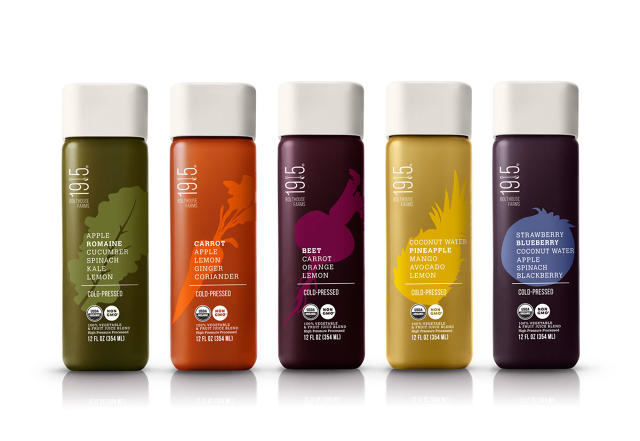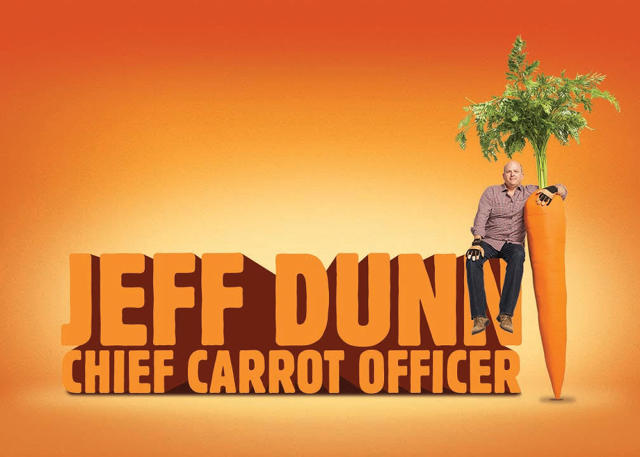How Campbell’s–Yes, Campbell’s–Could Make You Healthier
Can Jeff Dunn, the man who helped transform carrots into a fun snack food, sell fruits and veggies to the masses?
Jeff Dunn has mastered the art of tapping into consumer desires.
Early in his career, the product he made customers want was—in his own words—”sugar water in an attractive glass bottle.” He spent two decades at Coca-Cola, rising through the ranks to eventually become president of North American operations.

Then, one day, Dunn’s conscience kicked in: he recognized he was contributing to the obesity epidemic, cultivating children’s taste for sweet foods and generally making America an unhealthy place. But it also occurred to him that the very same skills that had allowed him to effectively sell cans of Coke would allow him to market healthy food in creative new ways. So in 2009, he gladly accepted the opportunity to become president and CEO of Bolthouse Farms, a 100-year-old family business in Bakersfield, California, that grows a billion pounds of carrots a year.
In a twist of fate, Bolthouse Farms was purchased in 2012 by the Campbell Soup Company for $1.55 billion. Overnight, Bolthouse workers were suddenly part of the Campbell’s family. After deliberately leaving big food, Dunn found himself squarely back in an enormous public corporation best known for its highly processed, sodium-heavy, additive-packed cans of soups. Dunn’s new challenge was to introduce the values of a small family business that produced fresh ingredients into the heart of big food. It was an intriguing proposition.
Campbell’s, for it’s part, has been working hard to adapt to changes in consumer demand. When Denise Morrison began her tenure as CEO of Campbell’s five years ago, she says that she did an in-depth analysis of the market. “There were seismic shifts taking place,” Morrison tells Fast Company. “There was a shrinking middle class in the developed markets as well as a shift towards health and well-being.” In order to accommodate these changes, Morrison has been leading the charge to acquire companies that better meet the needs of consumers. Bolthouse Farms fit this target perfectly, since it’s focused on producing healthy foods at a reasonable cost.
Under Morrison, Campbell’s created a fresh packaged food division called Campbell Fresh (or C-Fresh for short), and for the last three years, Dunn has been tasked with building out the new line of products. These days, C-Fresh makes products like snackable carrots, refrigerated salsa, and cold-pressed fruit juices that are sold on the perimeters of supermarkets rather than on the center aisles, where the shelf-stable products like cans of soup and boxes of cookies live. Bolthouse Farms is among the brands that Dunn oversees, but there will be other brands within the stable as well as Campbell’s continues to acquire new companies. Its most recent acquisition took place last month, when it bought Garden Fresh, a brand of salsa and hummus, for $231 million.

The Struggle to Innovate at a Big Company
In some ways, Dunn is the perfect candidate to run C-Fresh, since he knows how to navigate the complexities of a large food corporation. “Dunn has leveraged his expertise in consumer packaged goods at Coca-Cola into the fresh food space,” Morrison says. “This aligned perfectly with what we were trying to do here at Campbell’s.”
From Dunn’s perspective, his experience allows him to manage some of the challenges of working at a large company. For one thing, he’s aware that it can be hard to innovate when you are working alongside so many other divisions and generating products at such a massive scale.
“At large companies, you have a tremendous resources, but often there’s an unwillingness to take risks,” he says. “I’m a risk taker: My feeling is that you really don’t know how something will do until you try it out in the marketplace.” In his experience, large companies mitigate risk by doing a lot of internal analysis and testing, but in Dunn’s opinion, “This tends to dumb down good ideas and slows the whole process.”
When he was running Bolthouse Farms, Dunn found freedom in the company’s quick decision-making processes and its tolerance for some degree of risk. He points to the latest product in the Bolthouse range, a line of cold-pressed juices called 1915, which he was able to transform from an idea to market-ready product in 10 months.

Before Dunn took on his new role with C-Fresh, he asked that senior management allow him to sustain the nimbleness and entrepreneurial edge he had nurtured at Bolthouse. For him, this meant not over-integrating into the larger Campbell’s corporation and allowing managers to maintain autonomy over their product lines. While Campbell’s stays involved with things like finances and distribution, Dunn thinks things will move faster if each brand remains accountable for product development and day-to-day operations. “This has helped us not to get bureaucratized, which is the greatest fear of any small company that is acquired by a larger one,” Dunn says.
Despite these efforts, Dunn still has to wrestle with bureaucracy: when Bolthouse was an independent entity, Dunn had the freedom to make decisions single-handedly, but now he has to regularly report back to the top brass at Campbell’s. Jumping through these new hoops takes time and effort. But he’s found that communicating regularly with senior management, while not involving them too closely with everyday affairs, can go a long way to making sure that all parties are aligned. He’s also tried to generate some excitement about the creative ways that Bolthouse does things, so that these new approaches seemed novel and interesting, not alien and different. In other words, Dunn has thought carefully about how to market his processes and strategies to Campbell’s to get management on board.
Carrots Are Not Just for Rich People
While Campbell’s was keen to bring Dunn on to spice up its fresh-food unit, Dunn was also convinced that there were real benefits to coming back into big food. “There’s a building demand for healthy food,” Dunn says. “Today’s consumer is very clear in their desire for authentic, simpler, unprocessed foods that are coming from brands that are transparent about how they produce their products.”
Food culture in America has been slowly changing for decades now, with a greater consumer demand for healthier, whole foods. There’s been a widely held belief that this shift has been driven by wealthy, educated people, while lower-income communities have been satisfied with inexpensive canned goods and empty calories. But experts don’t believe this is true.
Sam Kass, for instance, who served at the White House as a senior policy adviser for nutrition policy, isn’t buying it. “I’d push back on this idea that people with lower incomes don’t care about eating healthy food,” he says. “I think the issue is the lack of affordable alternatives. Many low-income families are plagued with bodegas and gas stations as the main source of retail for food. I think there is more desire for healthy food than we tend to give them credit for.”
The U.S. Department of Agriculture estimates that 23.5 million people—7.3% of the U.S. population—live in food deserts, which are defined as residential areas without access to fresh, healthy, or affordable food. Half of these people also fall into the low-income category. Those who live in these areas must rely on corner stores that sell highly processed foods like sodas, chips, and chocolate bars. Kass, however, believes people in these neighborhoods would purchase healthier alternatives if they were available.
Dunn believes that larger food companies like Campbell’s are able meet some of this pent-up demand by driving down the price of healthier foods and distributing it widely. For instance, Campbell’s is able to sell the Bolthouse 1915 cold-pressed juices for about $5, which is far less expensive than many competing brands, such as BluePrint, which charges around $10 per juice. According to a Campbell’s spokesperson, the juices are flying off the shelves so quickly after only two months on the market that the company has had to rapidly work on adding more capacity. “From a mission standpoint, we at Bolthouse and now Campbell’s believe that we can change the food culture in this country by making fruits and vegetables more affordable,” he says.
However, trying to drive down the price of fruits and vegetables sometimes means making compromises. Dunn admits that buying a package of Bolthouse carrots from the grocery store is not exactly the same as picking up a freshly picked carrot from a farmer’s market. “The question we’re asking in the packaged fresh category is how you can get as close to an unadulterated product as possible, while also leveraging scale to make it convenient, accessible, and affordable,” he says. “These are trade-offs that we are constantly making.”

Healthy Skepticism
Dunn believes that it is possible to achieve a sweet spot between selling food that is as whole as possible and also inexpensive. The question is, Will the rest of the world agree? Or will the public remain skeptical that big food corporations are invested in the health of their consumers?
Kass, the White House nutrition policy adviser, says that some degree of skepticism towards big food is a good thing. He argues that large food corporations are motivated by many competing objectives, including meeting the demands of their investors by expanding their bottom line and keeping costs as low as possible.
But he also believes that because consumer demand for nutritious food is spiking, we are entering an important moment in which creating healthy products and driving sales is converging. “The market is driving this change in a way that we haven’t seen before,” Kass says. “It’s giving CEOs, particularly those who are trying to do the right thing, the impetus to be more aggressive about creating healthier products.”
And ultimately, even if big food companies like Campbell’s are only able to make incremental changes to make Americans healthier, Kass believes this is unquestionably a good thing. “Is there a lot of marketing they use in lieu of real change? Yes. But there is also plenty of real change happening as well,” Kass says. “These big food companies are responsible for feeding everybody, and there’s just no way to change the food system without engaging them.”
Fast Company , Read Full Story
(71)














